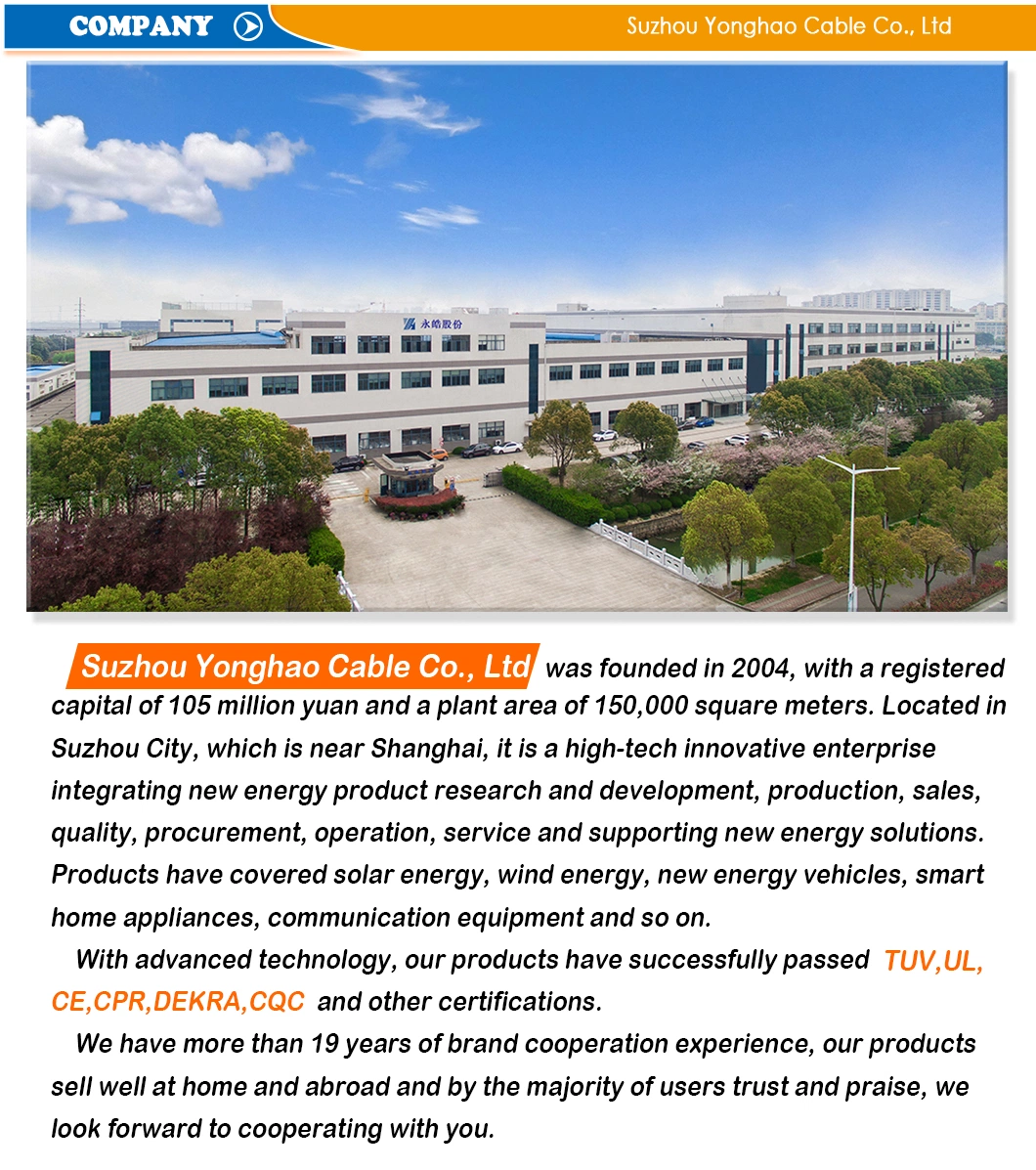- Overview
- Product Description
Basic Info.
Model NO.
2.5mm2 4mm2 6mm2 10mm2 16mm2 25mm2
Certification
TUV,UL,IEC,CE, CPR,ISO, RoHS,
Wire Core Material
Tinned Copper
Incoterms
Fob,CIF,CFR,DAP
Color
Red,Black,Other
Make
Suzhou Yonghao Cable Co.,Ltd.
Transportation
Sea, Land and Air
Transport Package
Pallet, Drum, Reel, Wooden Box
Specification
4mm2
Origin
China
HS Code
8544609000
Production Capacity
1, 200km/Days
Product Description


| Type | 1×6.0 mm2 DC 1500V |
| Conductor | Stranded tinned copper (IEC 60228 Class 5) 84/0.285mm (mix0.277mm max0.293mm) |
| Conductor Standed OD | 3.0mm |
| Cable OD | 6.3±0.2mm |
| Rated voltage | AC 0.6/1KV |
| DC 1.8KV | |
| Temperature range | -40°C~+90°C,dry/ humidity |
| Max.working temperature of conductor | 120°C |
| Short circuit temperature | 250ºC 5S |
| Standard | EN50618:2014 |
HOT PRODUCTS










 In the solar photovoltaic power generation system in the low-voltage DC transmission part of the cable, because the use of the environment and technical requirements are different, the connection of different parts have different requirements, the overall factors to consider are: cable insulation performance, heat resistance and flame retardant performance, aging performance and wire diameter specifications.
In the solar photovoltaic power generation system in the low-voltage DC transmission part of the cable, because the use of the environment and technical requirements are different, the connection of different parts have different requirements, the overall factors to consider are: cable insulation performance, heat resistance and flame retardant performance, aging performance and wire diameter specifications.1. The connection cable between the solar cell module and the module is generally connected directly by the connection cable attached to the module junction box. When the length is not enough, a special extension cable can also be used. According to the different power size of the component, this kind of connecting cable has a cross-sectional area of 2.5m square meters, 4.4m square meters, 6.0m square meters and other three specifications. This kind of connecting cable uses double insulation outer skin, has superior protection against UV, water, ozone, acid, salt erosion ability, superior all-weather ability and wear resistance.
2. Use a multi-strand flexible cable that passes the UL test to connect the battery to the inverter. Choosing short and thick cables can reduce system losses, improve efficiency, and enhance reliability.
3. The cables connecting the battery array to the controller or DC junction box must also use multi-strand flexible wires that pass the UL test. The cross-sectional area depends on the maximum output current of the battery array.
The cross-sectional area of the DC cable at the named location shall be determined according to the following principles: Cables connecting solar modules, batteries and batteries, and AC load cables. Generally, the rated current of the cables is 1.25 times of the maximum continuous working current of each cable. For connecting cables between the solar cell array and the square array, and connecting cables between the battery (group) and the inverter, the rated current of the cable selected is generally 1.5 times of the maximum continuous working current in each cable.







